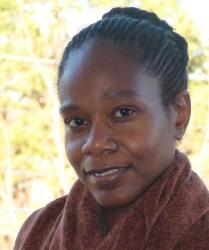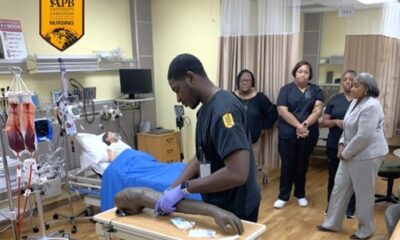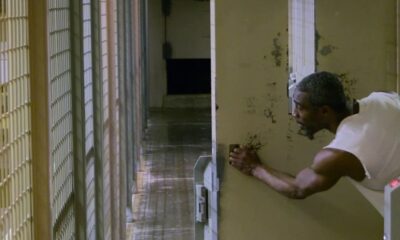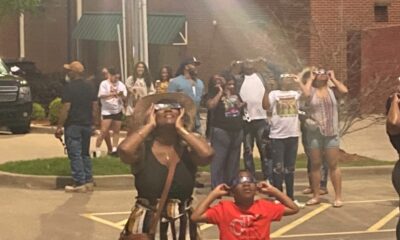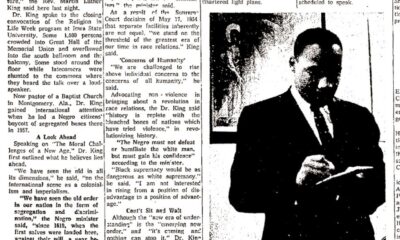Featured
The First Africans on American Soil Saved a Colony, Survived and Obtained Their Freedom
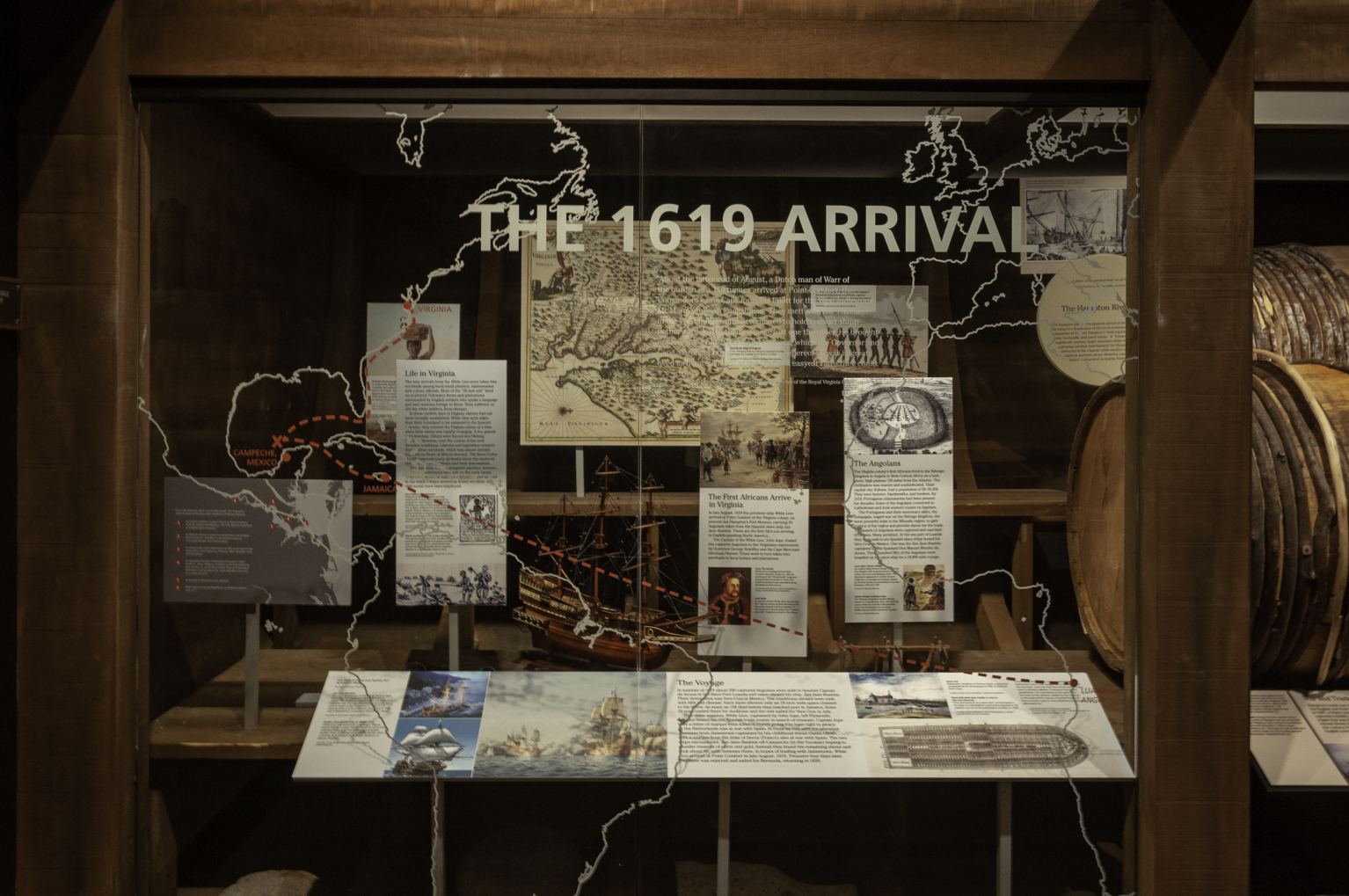
The San Juan Bautista gleamed as it sailed on the Bay of Campeche. It was the first of its kind – a western-style, Spanish galleon-type sailing ship. It was typically used to transport gold and jewels. But this day in 1619, it had an unusual cargo.
Still, two English corsairs saw it and were certain it held vast treasures and attacked.
After three days of battle, the San Juan Bautista’s captain surrendered, and the two corsairs boarded the ship to claim their gold. But when they opened the door to the belly of the ship, it was not valuables they found, but hundreds of Africans. Not wanting to leave empty handed, they took sixty of the healthiest looking ones, hoping to sell them.
“Unbeknownst to all involved, this single act of piracy would alter the New World forever,” K. I. Knight said in her book, Unveiled: The Twenty & Odd.
Those who survived would become the first Africans to land on what would later become American soil. Their skills and knowledge would save the colony of Virginia and its starving settlers. And they and their descendants would help build what is now known as America.
“It was a stroke of luck for America that they arrived.” Author K.I. Knight
“The stories of the Africans are amazing,” Knight said. “What they went through, what they saw, how they saved the colony. It’s one of the most important stories ever told. It gives new light to American history.”
“I don’t believe America would have existed, certainly Virginia wouldn’t have been a colony,” Knight said. “It was a stroke of luck for America that they arrived.”
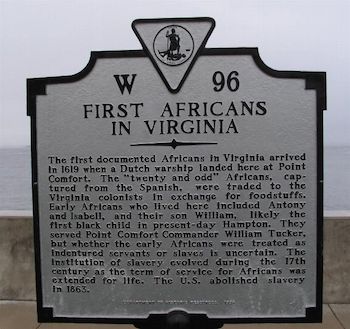
This month will mark 400 years since the first Africans landed in Hampton, Virginia and their achievements are being unveiled and highlighted. Still, for centuries their story has been punctuated with lies and the truth of who they were, where they landed and what they accomplished are part of the missing pages of history.
But research showed these first Africans were not slaves, but casualties of war.
Their Background
The Bantu-speaking kingdom, Ndongo, was located in modern-day Angola. It’s capital, Kabasa, was a grand city occupied by artisans and bustling with merchants from various regions who had come to sell their commodities in the city’s international market, according to Knight it was a market which, she said, rivaled the silk and spice markets of the Far East.
Educated by Portuguese Jesuits, the kingdom was mainly Catholic. The Africans spoke different languages and knew how to barter and trade, Knight said.
When a young king took the throne, the Portuguese governor saw an opportunity to conquer the kingdom and hired the Imbangala to raid the region. The Imbangala, according to Knight, were headhunters who would file their teeth into bones and cover their faces in ash to instill fear in their target.
The king fled the throne in fear, leaving his citizens, royals and servants to be bound and beaten. Many were then forced to march hundreds of miles to the coastal port of Luanda where they eventually boarded the San Juan Batista.
The ship was not built to carry human cargo, but 350 Africans were squeezed into its narrow underbelly, Knight said. Filth and dysentery set in and a third died by the time the ship had traveled almost fifty-six hundred miles. The ship’s Captain, Mendez de Acuna, made port in Jamaica where he sold 24 African boys for medicine and supplies before continuing his journey to Vera Cruz, she said.
But his journey would be delayed yet again.
The captains of the pirate ships, Treasurer and the White Lion, had been roaming the seas for weeks when they spotted the San Juan Bautista and launched their attack. After his defeat, the Captain of the San Juan Bautista declared what remained of his cargo. But the galleon-style ship was not known for carrying human cargo and the captains didn’t believe him until they saw the Africans.
They each took 30 Africans. Now they had to decide what to do with them. They needed food and water and the captains didn’t have enough to support them.
They couldn’t take them back to Africa. They couldn’t take them to Vera Cruz where the other ship was already heading. England and Spain had a peace treaty, but these English corsairs had just attacked a Spanish ship. And also, piracy was illegal in England. They decided to take them to Virginia. But a severe storm separated the ships and the White Lion was the first to arrive in Hampton, Virginia where the captain sold the surviving Africans for food. It was Aug. 25, 1619.
“The people of Virginia agreed to accept the Africans even though they knew it was illegal,” said Calvin Pearson, founder of Project 1619, a non-profit organization that was established to tell the story of the first Africans.
“They pulled into the first settlement, which was Point Comfort, where they sold the Africans for food,” Pearson said. For decades it had been taught that the first Africans arrived in Jamestown. But Knight and Pearson said that narrative was a lie.
An Accomplished Group
Pearson remembers how as a child his school would take them on a bus tour of Jamestown where it was pressed home that the first Africans had landed. But his interest in history and ancestry led him to the truth.
“It was kind of strange,” Pearson said. “We had been taught a different story. We had been taught that they had arrived in Jamestown, Virginia. It’s strange to find the narrative we were taught in school was a false narrative.”
John Rolfe, the widower of Pocahontas, was the secretary of the Virginia Company at the time and it was his job to report back to England what was taking place in the colony. He had reported to England that a ship arrived carrying “20 and odd negars,” at Point Comfort, today’s Port Monroe, Pearson said.
Their exact ages were unknown, but it’s believed they were between 8 and 25 years old, Pearson said.
“They couldn’t take any that was younger because they wouldn’t be of any value,” Pearson said. “The brutal work on plantations shortened the life of Africans and the young adults were able to produce other Africans.”
At that time, “slavery was illegal in the new world or the Virginia Colony,” Pearson said. The colony was governed by the laws of London, he said. And slavery had been outlawed in England for about 100 years, Pearson said.
The Treasurer arrived three or four days later, but its marque had expired, and Captain William Tucker determined it was a pirate ship. But before they could capture the ship, it left the port. Its journey would take it to Bermuda and England before the remainder of the Africans were brought back to Virginia, Knight said.
The Africans arrived during a time when the Native Americans were growing hostile towards the settlers. Soon, a war ensued.
“The Natives were already growing tobacco, corn, strawberries and other vegetables that would sustain them through the year,” Pearson said. “They knew without their help the English settlers would die.”
And they were right.
“They were dying,” Pearson said. “They couldn’t grow crops, raise cattle because of the war that was raging at that time. Because they had no food, the English settlers would eat the leather of their shoes; they would cannibalize those who were dying,” Pearson said. They were also not used to the 95-degree weather.
Between 1619 and 1623, 4700 settlers had arrived from England, Knight said. Only 100 survived, she said. Some had been killed by an illness brought by another ship, she said.
But then the Africans arrived. They could endure the heat and because of their skills, the “shires progressed faster than Jamestown and others,” Pearson said.
“North America and Virginia were similar to Africa with hot temperature, so their body was accustomed to the heat,” Pearson said. As for their skills, “the Africans coming out of Africa were herders, farmers. They knew how to raise cattle, chicken and pigs. They were already growing tobacco and vegetables in Africa.”
Their arrival in Virginia could be termed an accident. But their presence breathed life into the dying colony.
With their help, the Virginia colony was able to grow cotton and tobacco until eventually they were exporting around the world, Pearson said. The Africans built homes, schools and churches. They built roadways and communities.
“If not for these Africans who had arrived, Virginia would not have survived,” Knight said. “It was their knowledge that allowed Virginia to stay afloat because they were starving. When the Africans came it was the best thing that happened in Virginia. They sold horses, cows and livestock. They were sought-after breeders.”
They also knew how to manipulate the English legal system, she said.
Gaining Their Freedom
A census taken during that time showed thirty-two Africans, seventeen females and fifteen males, were living in Virginia. They were placed on various plantations. Since slavery did not exist in Virginia at that time, the census showed they were called servants. And historians referred to them as servants or enslaved Africans.
“We call it the accidental landing,” Pearson said. “We call them enslaved Africans. We don’t call them indentured servants because they didn’t have contracts.”
The indentured contracts lasted seven years. The Africans had to work 15 to 20 years before they could gain their freedom. Some obtained it when the plantation owner passed away and stipulated it in their wills. Others obtained it through some type of court action.
“They were purchased and traded, but so were other white servants who came to Virginia,” she said.
They were never considered slaves and, therefore, could obtain their freedom, Knight said.
“Africans had an opportunity to buy their freedom and purchase the freedoms of their families,” Pearson said. “Some obtained their freedom through wills and deeds.”
Once they gained their freedom, they bought their own homes and ran their own business. They entered into unions, some marrying Native Americans and the English settlers before it was outlawed. Some were named among the earliest freedom fighters in what eventually became the United States of America. One would act as an attorney and another became a magistrate, auditing and ruling over small cases before later becoming a judge of Europeans and Africans. After his death, a new law was passed that made it illegal for an African to judge any English man or woman, Knight said.
“The whites were indebted to them,” Knight said. “They had so much knowledge, they were thinking of ways to retain them. That’s how slavery came about.”
They wanted to be able to control the Africans and soon they began to change the laws, taking away their ability to obtain their freedom. In 1661, they entered the period of chattel labor.
“The first Africans did so much, but they never got acknowledged,” Knight said.
Instead, they made their descendants slaves.

-

 Black History4 months ago
Black History4 months agoThe untold story of a Black woman who founded an Alabama hospital during Jim Crow
-

 Featured8 months ago
Featured8 months ago‘No Closure’ In Town Where Five Black Residents Were Either Murdered, Died Suspiciously Or Are Missing
-

 Black History9 months ago
Black History9 months agoBlack History Lost and Found: New Research Pieces Together the Life of Prominent Texas Surgeon and Activist
-

 Featured8 months ago
Featured8 months agoFounder of “The Folding Chair” Podcast Calls Montgomery’s Brawl ‘Karma’
-

 Featured8 months ago
Featured8 months agoThousands ‘Live Their Dream’ During National Black Business Month
-

 Featured10 months ago
Featured10 months agoJuneteenth And ‘246 Years Of Free Labor’ Are Key To Conversations About Reparations

